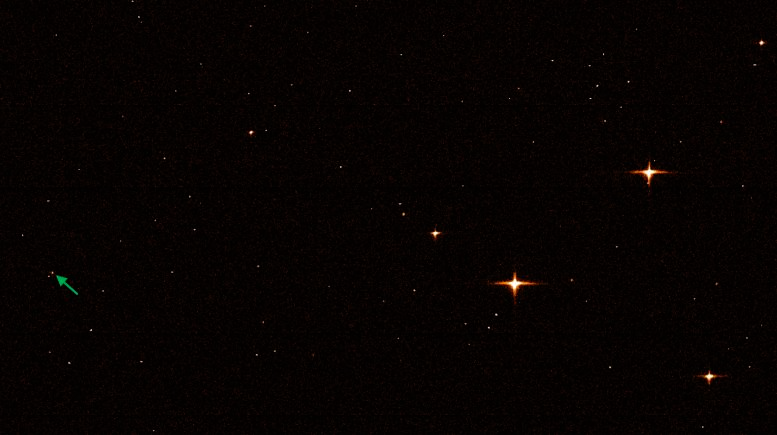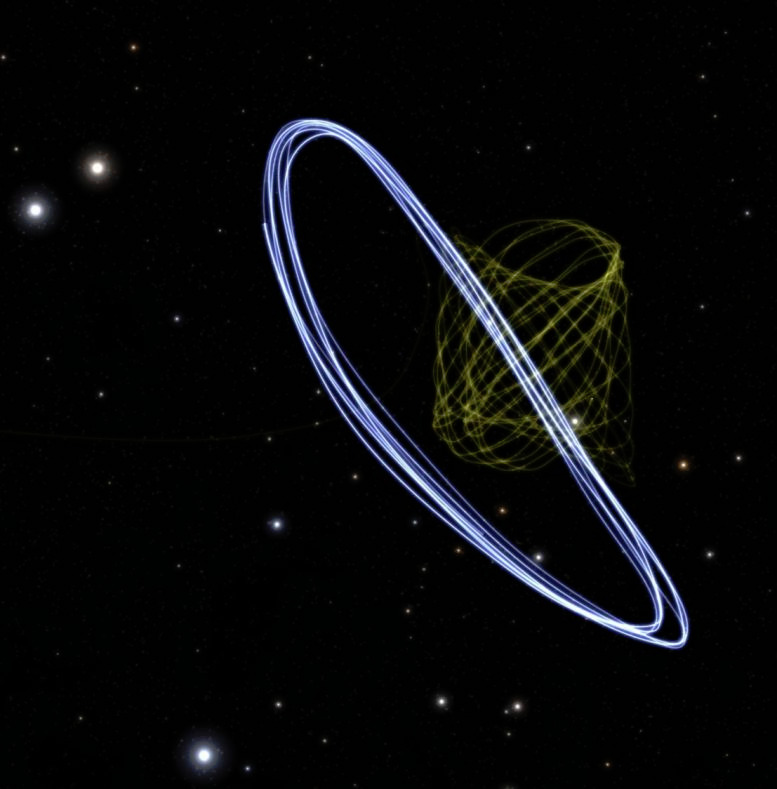mollwollfumble said:
Got it! Gaia Observatory Snaps Photo of James Webb Space Telescope at L2

Gaia’s sky mapper image showing the James Webb Space Telescope.
Both spacecraft are located in orbits around the Lagrange point L2, 1.5 million km from Earth in the direction away from the Sun. Gaia arrived there in 2014, and Webb in January 2022.
On February 18, 2022, the two spacecraft were 1 million km apart, with an edge-on view of Gaia towards Webb’s huge sunshield. Very little reflected sunlight came Gaia’s way, and Webb therefore appears as a tiny, faint spec of light in Gaia’s two telescopes without any details visible.
Sky mapper
A few weeks before Webb’s arrival at L2, Gaia experts realized that during Gaia’s continuous scanning of the entire sky, its new neighbor at L2 should occasionally cross Gaia’s fields of view. Gaia is not designed to take real pictures of celestial objects. Instead, it collects very precise measurements of their positions, motions, distances, and colors. However, one part of the instruments on board takes a sort of sky images. It is the ‘finder scope’ of Gaia, also called the sky mapper.
Gaia orbits L2 in a Lissajous orbit. The James Webb Space Telescope orbits L2 in a halo orbit. The telescopes are between 400,000 and 1,100,000 km apart, depending on where they are in their respective orbits. This image shows the relative sizes and locations of the Gaia orbit (yellow) and the Webb orbit (white). In this view, Earth is located to the left, not far outside of the frame. Gaia’s Lissajous loops have L2 right in their center, while Webb’s halo orbit loops are closer to Earth by about 100,000 km on average. Credit: ESA/Gaia/DPAC; CC BY-SA 3.0 IGO

https://scitechdaily.com/webb-space-telescope-begins-multi-instrument-alignment/
After meeting the major milestone of aligning the telescope to NIRCam, the Webb team is starting to extend the telescope alignment to the guider (the Fine Guidance Sensor, or FGS) and the other three science instruments. This six-week-long process is called multi-instrument multi-field (MIMF) alignment. After MIMF, Webb’s telescope will provide a good focus and sharp images in all the instruments. In addition, we need to precisely know the relative positions of all the fields of view.
You might be wondering: If all of the instruments can see the sky at the same time, can we use them simultaneously? The answer is yes! With parallel science exposures, when we point one instrument at a target, we can read out another instrument at the same time. The parallel observations don’t see the same point in the sky, so they provide what is essentially a random sample of the universe. With a lot of parallel data, scientists can determine the statistical properties of the galaxies that are detected. In addition, for programs that want to map a large area, much of the parallel images will overlap, increasing the efficiency of the valuable Webb dataset.
Comparing fields of view and relative direction. Webb’s guider (FGS) and four science instruments (NIRCam, NIRSpec, NIRISS, and MIRI) share the field of view of the Webb telescope optics, but they actually see different parts of the sky at any given observation.

